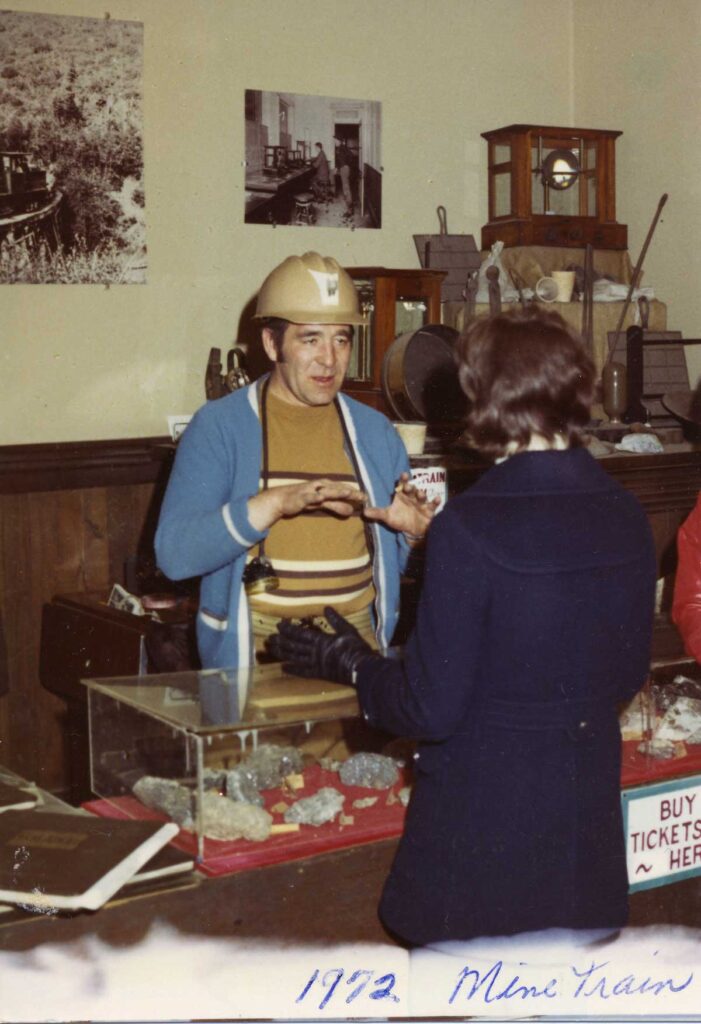This is the first of two articles about Parkite Jim Santy.
“I’ll be a resident of this town until they bury me,” Jim Santy once said, “and then I’ll be a permanent fixture.”
Today, thirteen years after his death, Santy is still with us. But his name on the James L. Santy Auditorium in the Park City Library and Education Building only hints at his impact on his old hometown.
While many of those who grew up here in the mining era struggled with the transition to skiing, Santy embraced it. At the grand opening ceremony of Treasure Mountains (now Park City Mountain resort) in December 1963, he directed the Park City High School Band. He was an administrative assistant at the resort in the early 1970s. He served on the Park City Council in three different decades – the 1960s, the 1980s, and the 1990s., and in 1986 he cast the swing vote in favor of the controversial Sweeney master plan to develop the hillside west of Old Town.
That vote ruffled some feathers on the council and in the community. But you’d be hard-pressed to find anyone who didn’t like Santy. His perpetual grin was infectious, his sense of humor disarming. Often using his violin as a prop, he was always in demand as a master of ceremonies. And his enthusiasm for music made him a favorite among generations of Park City students. Think of him as a cross between comedian Jack Benny and bandleader Harold Hill from “The Music Man.”
As a student at Park City High School in 1950, Santy was a member of the band that played for about 65,000 people at the East-West Shrine Game at Kezar Stadium in San Francisco. In 1951 he enlisted in the Marines and served on the aircraft carrier Valley Forge off the Korean coast.
After his discharge, Santy worked in the New Park Mine and studied special education and music at Westminster College. In 1959 he was hired to direct the high school band in Carlin, Nevada, then returned to his hometown in 1961 to assume the same role at Park City High School. A longtime member of the Park City Community Church, he sang at services and special events, often accompanied on the piano by his wife, Carol.
By 1968 Santy was back in the mines, but in a different capacity: as a tour guide in a new mining museum established deep inside the Spiro Tunnel. “Park City’s genial Jim Santy … tells the history of silver mining, explains the … mining equipment on display, relates the story of the Spiro Tunnel and the man in the yellow slicker,” the Park Record reported in April 1969.

Credit: Park City Historical Society & Museum, Wilma Larremore Collection
Santy ran the museum until rising insurance costs put it out of business in 1978. However, it was the inspiration for a later attraction – the Silver Mine Adventure – that took visitors into the Ontario Mine from 1995 to 1999.
In the 1970s, when most Park City firefighters and EMTs were volunteers, Jim Santy was active in both groups. He answered the call when the iconic Silver King Coalition Building burned in July 1981. He was later named the fire department’s assistant captain. Longtime locals will remember Santy as a fixture in Fourth of July parades, pulling an antique fire-hose cart down Main Street, dressed as a monk and distributing “holy water.”
But above all else, Santy is remembered for his campaign to save the old Park City High School. That’s where part two about Jim Santy will pick up, so stay tuned.
The next Free Day at the Park City Museum is Saturday, November 18. Made possible by the Summit County Restaurant Tax Grant Program.